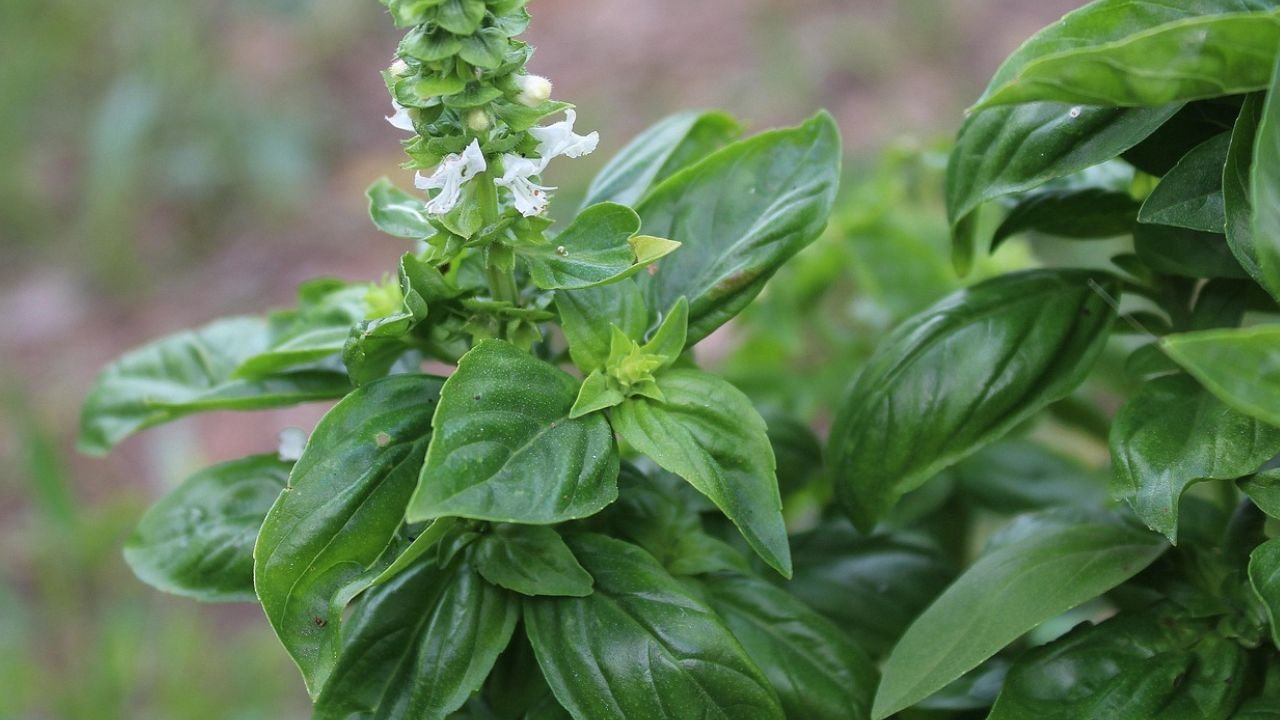Basil (Ocimum basilicum) is an aromatic, leafy herb that belongs to the Lamiaceae (mint) family. It is native to tropical Asia and Africa. It is widely cultivated around the world for culinary, medicinal, and aromatic uses. Known for its sweet and slightly peppery flavor, basil is a key ingredient in many cuisines, especially Italian, Thai, and Indian cuisine. The plant grows as a small herbaceous shrub with soft green leaves and tiny white or purple flowers. Basil is rich in antioxidants, essential oils, and vitamins, making it not only delicious but also beneficial for health. It thrives well in warm, sunny climates.

Scientific Name: Ocimum basilicum
Some Basic Information about Ocimum basilicum
Habit– Erect, pilose (hairy) annual herb
Root– Tap root.
Stem– Erect, much-branched, quadrangular, light green to dark purple, solid, and pilose.
Leaf– Simple, opposite, petiolate, ovate to lanceolate, entire margin, aromatic, with unicostate reticulate venation; stipules absent
Inflorescence– Terminal raceme; flowers arranged in whorls (verticillasters) along the inflorescence axis
Flower– Bracteate, pedicellate, complete, zygomorphic, bisexual, hypogynous, small, tubular, and white to magenta in color
Calyx– 5 sepals, gamosepalous (fused), bilabiate (two-lipped), persistent, valvate aestivation
Corolla– 5 petals, gamopetalous (fused), bilabiate, valvate aestivation
Androecium– 4 stamens, didynamous (two long and two short), epipetalous (attached to petals), anthers dithecous (two-lobed), introrse (opening inward)
Gynoecium– Bicarpellary, syncarpous (fused carpels), ovary superior, deeply four-lobed, with a gynobasic style (arising from the base of the ovary), and axile placentation
Fruit– each lobe develops into a one-seeded nutlet. its fruit is generally seeds.
Floral formula– ⚥ ↑ K(5) C(5) A2+2 G(2)
Systematic Position:
Division – Magnoliophyta (Angiosperms)
Class – Magnoliopsida (Dicotyledons)
Order – Lamiales
Family – Lamiaceae (Mint family)
Genus – Ocimum
Species – Ocimum basilicum L.